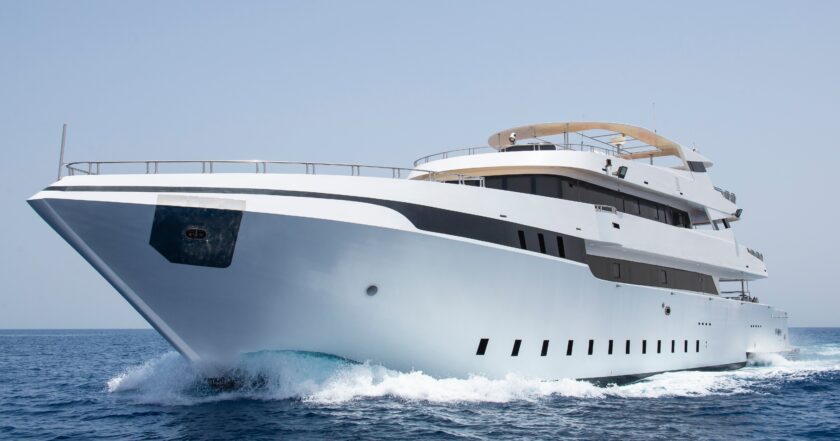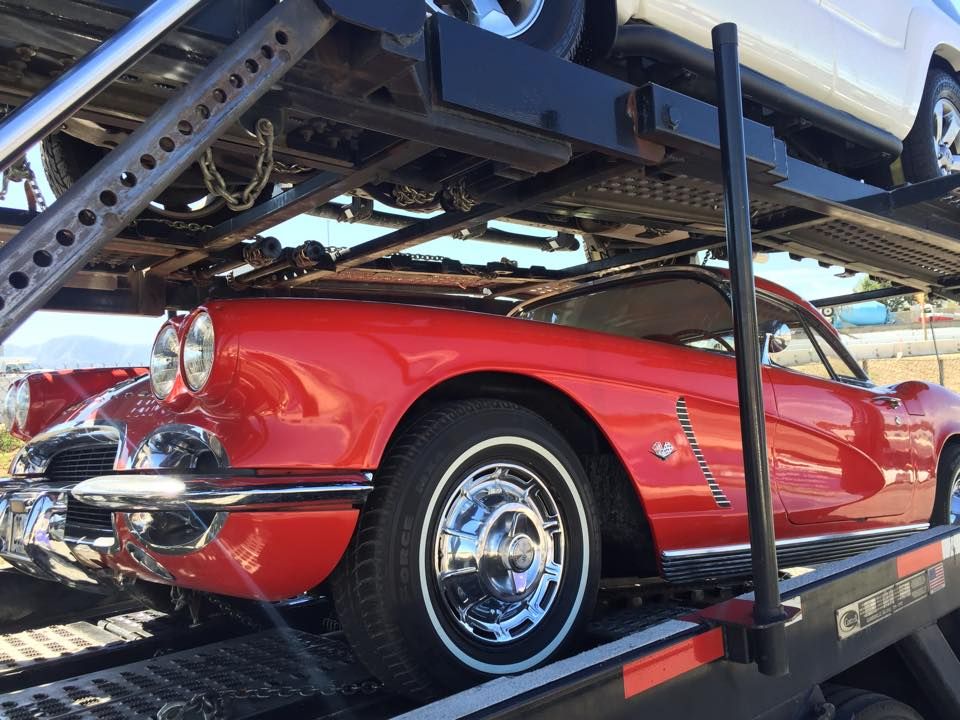Are you a proud owner of a personal watercraft, sailboat, or luxury yacht? Then, congratulate yourself on unlocking endless opportunities to enjoy plenty of recreational activities, from sailing through serene waterways to experiencing the thrill of racing and competitive riding.
These are only a few examples of what excitement and fun personal watercraft brings to our lives, not to mention their financial advantages for businesses. Watercrafts appeal to water sports enthusiasts, encouraging them to try one of these sturdy ferries.
This guide addresses watercraft types and shipping, highlighting these key points:
- An Overview of Watercraft Types and Features
- Watercraft Shipping Methods
- Special Considerations for Shipping Water Vessels
An Overview of Watercraft Types and Features
By definition, a watercraft is any water vessel, such as, ships, boats, or motors designed to operate across the different water streams for transporting people and goods or performing water sports. The following is a brief introduction to each of the common watercraft types with their special features and uses:
Boats
Boats are versatile watercraft for sailing, fishing, traveling, etc. Different boat types, with various sizes, styles, and engine power ranges, have many uses, such as:
- Fishing boats are usually large and have special fishing gear and equipment storage space. They are ideal for fishing trips.
- Cruising boats have comfortable seating, a galley, and a head and are perfect for leisurely cruising along the coastline.
- Waterskiing and wakeboarding boats have smaller, more agile designs with powerful engines. They are well-suited for towing water skiers and wakeboarders, as their name suggests.
- Day boats involve different types, like small inflatables and large cruisers. They are primarily used for day trips to explore nearby islands or waterways.
Yachts
Common yachts are suitable for overnight stays and extended voyages since they usually have multiple decks, a galley, a dining area, and a master suite. There is also a variety of yacht types with different models and styles, like motor, sail, and superyachts. They have these common uses:
- Luxury cruising
- Social gatherings
- Romantic getaways
- Business meetings
Water Scooters
Several types of water scooters, or personal watercraft (PWC), are used for recreational activities. These are:
1. Rec-Lite PWCs
Those water bikes are known and loved for their lightweight, fuel-efficient, and easy-to-maneuver features. This type is perfect for beginners and families as well.
2. Sport Class PWCs
Sport Class PWCs have powerful engines and offer agile handling. They boast an outstanding performance focusing on tricks to be efficient for jumping, carving, and performing stunts.
3. Sport Fishing PWCs
The basic features of these are storage compartments, fishing platforms, and trolling capabilities, making them well-suited for anglers.
4. Performance PWCs
Exceptional speed, acceleration, and handling are some of the main features of Performance PWCs. This type is designed for experienced riders. Their primary uses involve high-speed runs, slalom races, and competitive riding.
5. Recreation PWCs
Recreation PWCs are for people wanting a balance of performance, comfort, and versatility. They work for a wide range of activities, such as cruising, exploring, towing watersports equipment, and occasional freestyle maneuvers.
6. Touring and Luxury PWCs
Touring and Luxury PWCs provide spacious seating, plush comfort, and long-range fuel capacity. They are designed for extended touring and day trips, exploring multiple bodies of water, and enjoying the amenities of a comfortable ride.
7. Stand-Up PWCs
Those are lighter in weight and offer more agile handling. They are used for freestyle maneuvers, racing, and for experienced riders ready for a more challenging riding experience.
Watercraft Shipping
Shipping a watercraft across the country or even overseas is possible through various methods, depending on individuals’ destination and preference. Car shipping companies provide shipping services for several watercraft types by land. Other shippers also ship water vessels through the ocean.
The following is a breakdown of how these different methods work:
Watercraft Land Transport
Similar to shipping any vehicle type by land, open or enclosed trailers are the common options for watercraft land transport. Here are the benefits and drawbacks of each:
Open Trailers
This is a straightforward and cost-effective method for transporting watercraft overland. It is specifically suitable for larger boats that cannot be easily disassembled or transported inside a container.
Benefits:
- Reasonable costs
- Simple
- Suitable for larger boats
Drawbacks:
- The watercraft is exposed to the elements, which can cause damage to the boat’s hull and paint
- The method requires careful securing to prevent movement and potential damage.
Enclosed Carriers
Enclosed shipping offers a more protective environment for transporting watercraft, minimizing exposure to the elements and potential damage. Water vessels are placed inside a specially designed container or trailer that protects them from wind, rain, and UV rays.
Benefits:
- Enhanced protection from the elements
- Reduced risk of damage to vessels’ hulls and paint
- Ideal for luxury vessels
- Suitable for watercraft of different sizes, including smaller craft that can fit inside a container
Drawbacks:
- Its expensive cost may be prohibitive for some people
- It may not accommodate large vessels.
Watercraft Ocean Transport
There are three major methods of watercraft ocean transport. They are RoRo, LoLo, and Container Shipping.
RoRo Shipping
Roll-on/Roll-off is a common and efficient watercraft marine shipping method. Shippers drive boats directly onto a specialized RoRo vessel. Once on board, boats are secured in designated parking slots.
Benefits:
- Convenient and efficient
- Requires minimal preparation
- Suitable for smaller boats and personal watercraft
Drawbacks:
- Limited to boats that can be driven onto the vessel
- It may not be suitable for larger boats
Lolo Shipping
Lift-on/lift-off (Lolo) shipping is another option for ocean transportation, particularly for larger boats that cannot be driven onto a RoRo vessel. Boats are carefully lifted onto a specialized cargo ship using cranes. Once on board, they are secured in designated deck areas.
Benefits:
- Suitable for boats of all sizes
- Can transport boats that are too large for RoRo vessels
Drawbacks:
- More expensive than RoRo shipping
- Requires specialized equipment and expertise
Container Shipping
Shipping watercraft through specialized containers for sea shipping is another common method. It is particularly helpful for shipping boats that are too large or valuable to be shipped through RoRo or LoLo vessels.
Benefits:
- Secure and protected transportation
- Suitable for boats of all sizes
- It can be combined with other cargo shipments
Drawbacks:
- Requires disassembly or partial dismantling of the boat
- It may be more expensive than RoRo or LoLo shipping
Special Considerations for Shipping Water Vessels
The process of shipping any vehicle or watercraft shares the same basic principles. Still, it is critical to learn about the special considerations and specifications for shipping each common type of watercraft to ensure proper preparation.
Shipping Boats
People looking to ship their boats safely and conveniently must take note of these special boat shipping considerations:
- Decommissioning boats of all fuel, oil, and other fluids is the initial step in preparing a boat for shipping. This step must not be skipped as it prevents spills and potential hazards during transport.
- Removing accessories is the second thing to consider for safe boat shipping. It is an essential step for ensuring a secure and stable load.
- Protecting the hull is what boat shippers must do next. It is done by wrapping it in protective padding or shrink wrap.
- Securing the boat firmly to the trailer or transport vessel with high-quality tie-downs at multiple points around the hull.
- Finally, boat owners and shippers must properly secure all loose items inside the boat. This helps prevent shifting during transport.
Shipping Yachts
Yachts are valuable and sensitive watercraft that need special care and preparation for secure shipping. Following these recommended yacht shipping practices helps ensure they arrive in pristine condition:
- Check the yacht for any structural damage or leaks before shipping to prevent further issues during transport.
- Examine the yacht’s engine. It must be in good working order before shipping and properly drained of fluids to prevent leaks.
- Adjust the yacht’s ballast to achieve a level and stable position on the transport vessel.
- Secure all rigging and sails that can incur damage or entanglement during transport.
- Wrap or protect the yacht’s delicate parts, such as antennas or windows. Skipping this step can cause scratches or damage to its superstructure.
Shipping Jet Skis, Sea-Doos, and Water Scooters
Owners of exciting personal watercraft, such as jet skis and sea-doos, want to ensure a smooth and hassle-free shipment of their special equipment. After all, they would properly be looking for a peaceful vacation with their PWC without worrying about them during transport.
So, they can refer to these five steps for such convenient PWC shipping:
- Before anything else, detach the fuel line and drain any remaining fuel; this is an essential step to prevent spills and fire hazards.
- Like previous watercraft, people shipping a PWC should remove accessories like ropes, horns, or lights, ensuring a secure and stable load.
- Next comes PWC positioning, which must be placed upright. Also, remember to secure it to a trailer or transport vessel using high-quality tie-downs at multiple points.
- Use a protective cover to protect the engine and prevent dirt, dust, or moisture from entering it.
- After transport, a final critical step remains: rinsing the PWC with clean, fresh water; this is again essential to remove any salt or debris that may have accumulated.
Tempus Logix is a professional American car shipping company with over eight years of experience shipping different vehicle and watercraft types nationwide.
The company ships boats, yachts, and water motors using special trailers that can accommodate over-sized boats up to 70 feet in length. For more information about watercraft shipping services, contact the company’s professional team and inform them about your vessel’s specifications. They will readily answer any inquiry.
Conclusion
There are different watercraft types that cater to individuals’ personal preferences and sporting ambitions. Many vessels are a significant investment, so their security is a must whether storing or transporting them nationwide.





